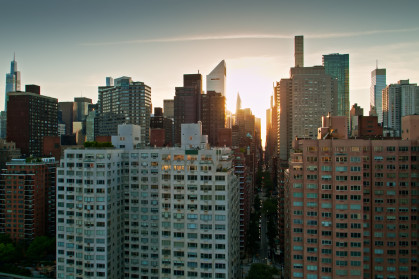
How much is insurance on a NYC co-op or condo building?
The ever-increasing cost of insurance varies depending on your building's specifics, the type of coverage, the carrier, the limits and of course your building’s claims history. Some co-ops and condos may be required to carry insurance policies in excess of the standard coverage limits in order to meet the underlying mortgage lender's requirement.
It is important for your board to regularly review your building's insurance coverage and compare rates from different carriers to ensure proper coverage and best price. A qualified insurance professional can help your board navigate the process and make informed decisions about the coverage that is needed for your building.
A package policy may be less expensive than purchasing property and general liability insurance separately. Some buildings may be eligible for discounts or credits from insurance carriers based on their safety features, such as security cameras or sprinkler systems.
Factors that affect the cost of your insurance
Past claims: The number of claims that your building’s residents, staff, and others have made over the last five years is a huge variable in the insurance premium. Once a building has no claims for five years, it is seen as less of a risk to the insurance carriers and it will be more competitive to get multiple bids.
Lawsuits: Insurance carriers evaluate risks when they price their insurance policies. The higher the risk, the higher your premium. Lawsuits are considered risky and as such, they increase the insurance premiums.
Quality of your insurance broker: The cost of insurance also depends on the quality of the insurance broker and how well they “sell” or present the building and association to the insurance carriers.
Fire safety is a huge consideration
Building specifics that determine the insurance premium include your building’s structure and systems as it relates to fire safety. Some of the variables include:
Building structure: Older and small buildings are often built with a wood-frame structure, which is more susceptible to damage from fire and pests. Concrete and masonry structures are fire resistant and have less risk of fire spreading between floors.
Means of egress: Also known as emergency exits, these play a crucial role in ensuring the safety of the occupants in a building during an emergency such as a fire. In NYC, building codes require that multifamily buildings have at least two means of egress in case of an emergency. This means that there must be two separate and distinct routes for occupants to safely leave the building. This can include a primary means of egress such as a stairwell, and a secondary means of egress such as an emergency exit or a fire escape.
Sprinkler system: A sprinkler system is a network of pipes and nozzles that are designed to automatically extinguish fires by spraying water or other fire-extinguishing agents on the flames. In New York City, many older buildings were "grandfathered" in, exempting them from certain building code requirements that were implemented after the building was constructed. One such requirement is the installation of sprinkler systems throughout the entire building. As a result, many older buildings in NYC may only be required to have sprinkler systems installed in specific areas of the building such as the laundry room or the boiler room, and not in individual units or common areas.
How much does co-op and condo building insurance cost on average?
The table below shows the cost of insurance measured on a per-apartment basis, based on data gathered by The Folson Group, a co-op and condo consultant that specializes in reducing the cost of operating and repairing and maintaining buildings:
Cost of Insurance | |
|---|---|
| Average |
|
| Median |
|
| High |
|
| Low |
|
Source: The Folson Group
Sign Up for our Boards & Buildings Newsletter (Coming Soon!)
Thank you for your interest in our newsletter. You have been successfully added to our mailing list and will receive it when it becomes available.























